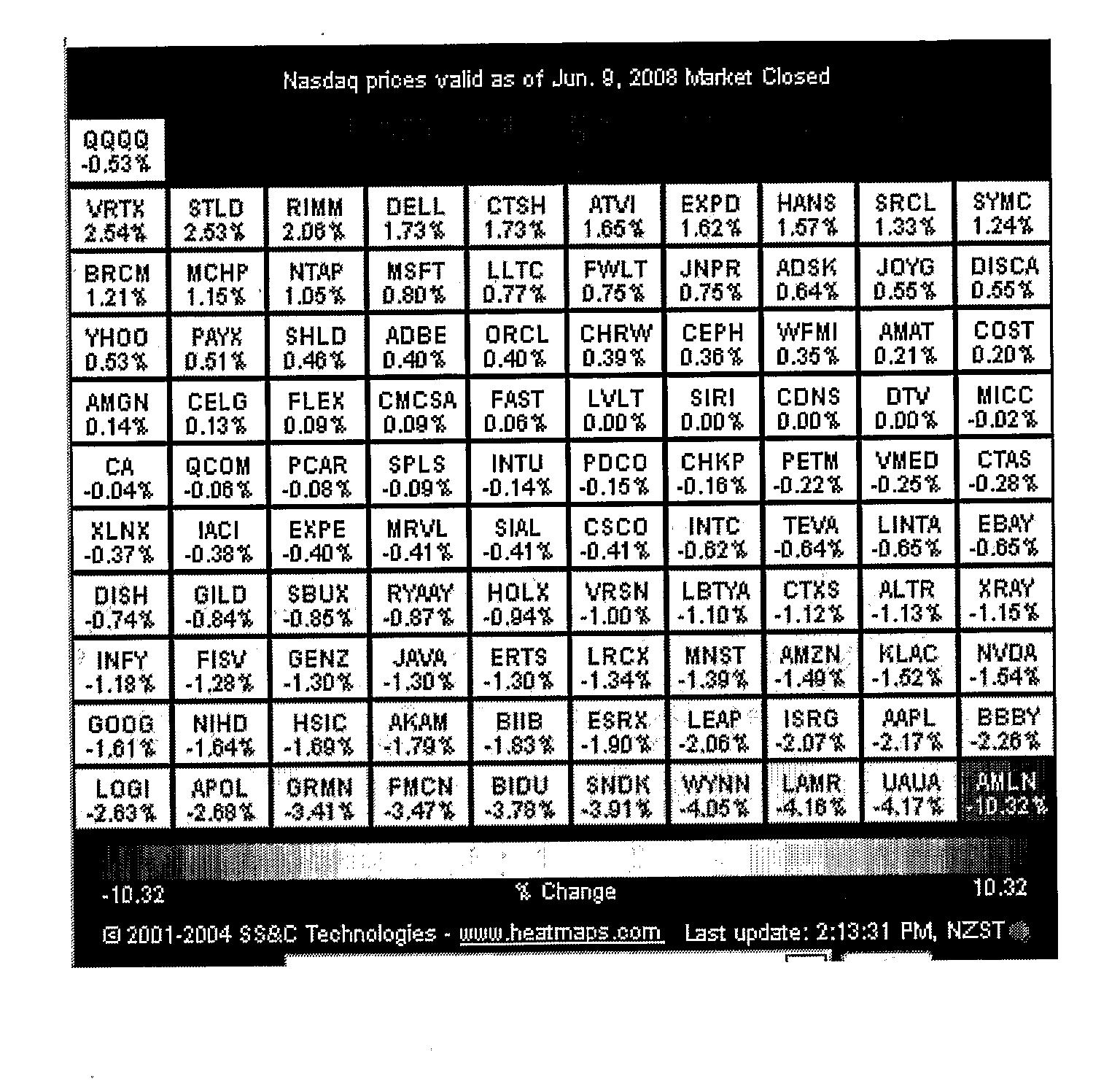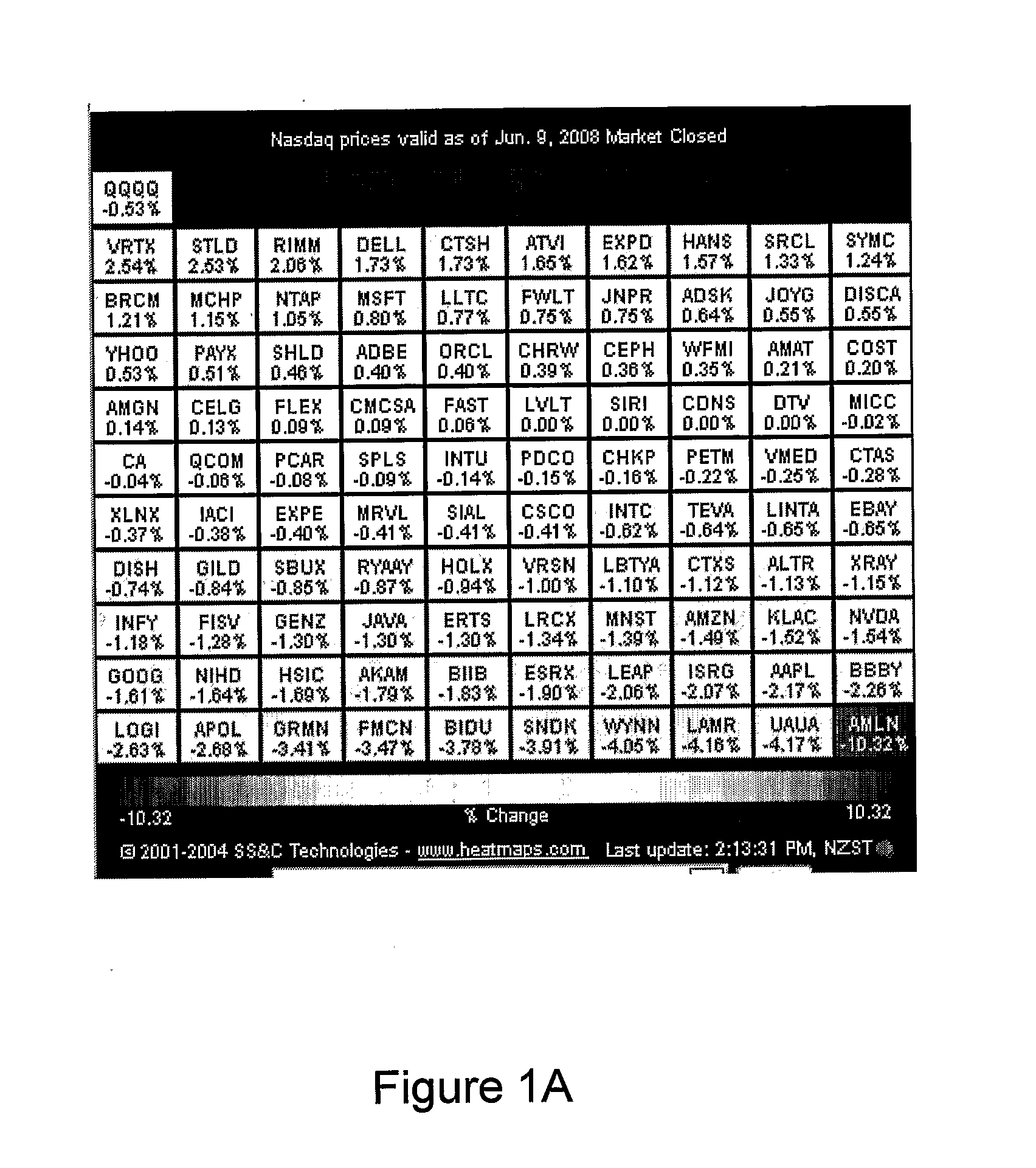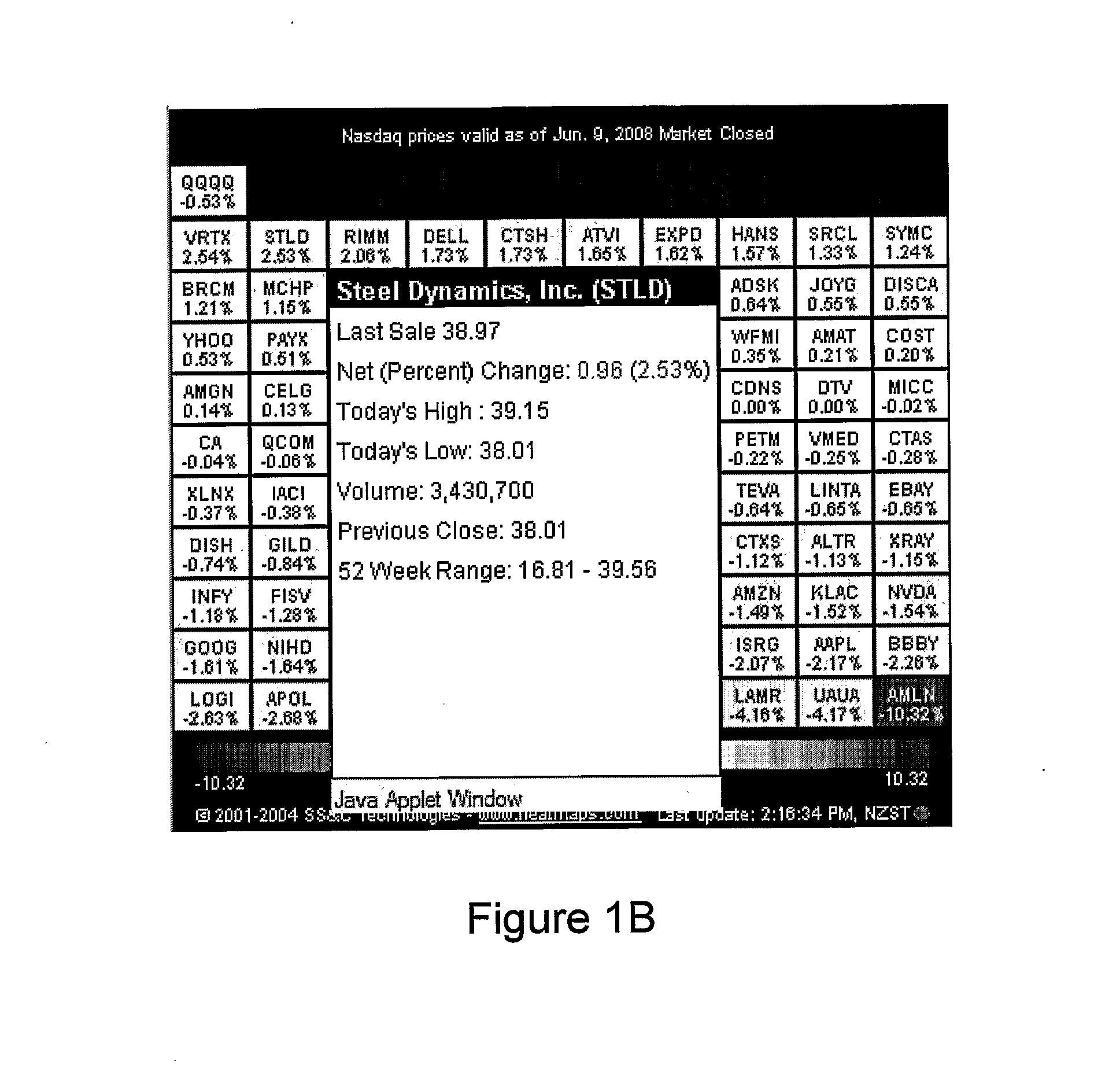Method and system of graphically representing discrete data as a continuous surface
a discrete data and graphic representation technology, applied in image data processing, instruments, cathode-ray tube indicators, etc., can solve the problems of less meaningful charts, less meaningful charts, and traditional charts using well established but often poorly implemented ways of representing data
- Summary
- Abstract
- Description
- Claims
- Application Information
AI Technical Summary
Problems solved by technology
Method used
Image
Examples
first embodiment
[0306]According to this embodiment there is shown in FIG. 8 a conceptual system diagram of a data visualization system 801 which includes a data retrieval module 803 configured to enable the retrieval of data from a data storage module, which is in communication with the data visualization system.
[0307]The system further includes a smoothing module 805 and an interpolation module 807 which are arranged to receive the data obtained by the retrieval module. Each of the smoothing module and interpolation modules are controlled using specific algorithms to create, from the input data, a smoothed surface and an interpolated surface respectively. The smoothed and interpolated surfaces are then combined by a surface combining module 811. The output of the surface combining module is provided to a rendering module 813, which is arranged and controlled to create the appropriate signals for the output device 815, which in this embodiment is a display module, which is used to visualize the dat...
effect example
Radius Effect Example
[0330]As an alternative to the IDW example described above, a further IDW example is provided that incorporates a radius effect to calculate the weight factor as described below.
[0331]According to this example, the radius effect may be used to calculate the weight factor Wi. The radius value R is calculated based on the direct radial distance to the furthest point. That is, it is calculated by determining the distance for all points by taking the square root of the sum of the squares of the x and y difference values, and using the largest of these distance values. For example, the radius value between points x,y (5,5) and x8,y8 (7,10) is the square root of (5-7)2+(5-10)2=5.385165, as shown in the table below.
[0332]The weight factor is calculated as follows using the calculated R value:
Wi=(R-diRdi)2∑j=1n(R-djRdj)2
where R=max(di)=distance between (X, Y) and the farthest point (Xi, Yi)
[0333]Therefore, the weight given to the furthest point is 0, whereas the weight ...
second embodiment
[0362]In a second embodiment, the data visualization system 8101 as shown in FIG. 9 includes a data retrieval module 8102 arranged to retrieve data from a data store 8103. Further, a surface cumulating module 8104 is controlled to produce a cumulative surface. For example, each source point has applied to it a drop off function, for example, a function that produces a conic drop off, and the surface cumulating module 8104 is arranged to combine or accumulate the drop off functions to provide a cumulative surface.
[0363]The resultant cumulative surface is then analyzed using a residual surface module 8105 to produce residuals and a residual surface.
[0364]The residuals are produced by the residual surface module 8105 by calculating the difference value between the cumulative surface output from the surface cumulating module 8104 and the actual source points. These residuals are then used by the residual surface module 8105 to generate the residual surface by applying an IDW function to...
PUM
 Login to View More
Login to View More Abstract
Description
Claims
Application Information
 Login to View More
Login to View More - R&D
- Intellectual Property
- Life Sciences
- Materials
- Tech Scout
- Unparalleled Data Quality
- Higher Quality Content
- 60% Fewer Hallucinations
Browse by: Latest US Patents, China's latest patents, Technical Efficacy Thesaurus, Application Domain, Technology Topic, Popular Technical Reports.
© 2025 PatSnap. All rights reserved.Legal|Privacy policy|Modern Slavery Act Transparency Statement|Sitemap|About US| Contact US: help@patsnap.com



